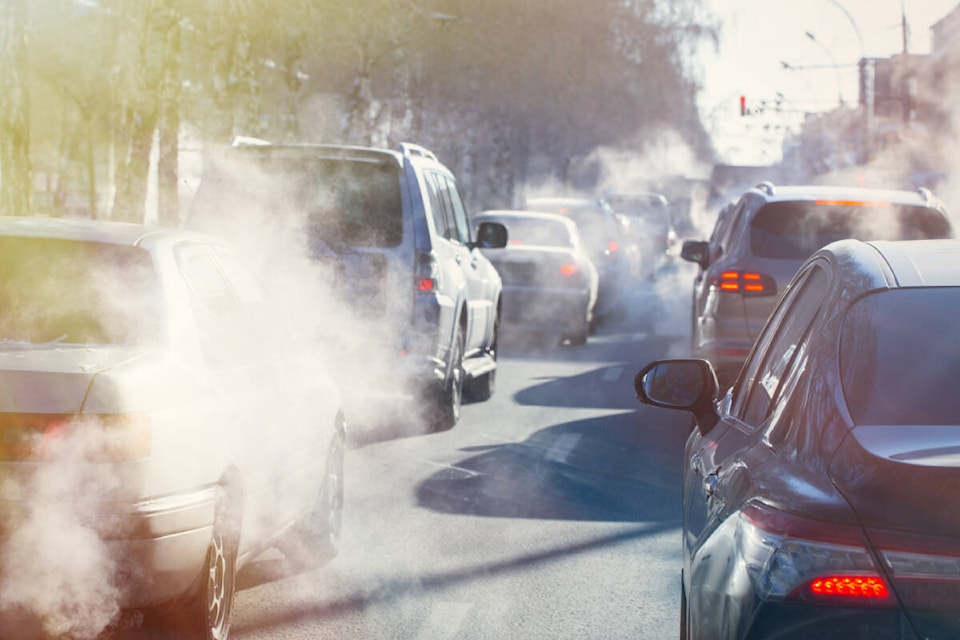By Megan Tomlinson
Special to the Record
The average human takes 16 breaths per minute, 960 per hour or 8.4 million per year.
Breathing is a universal process. With every breath, ambient air floods through the lungs where over 300 million alveoli support the transfer of gases, particularly oxygen and carbon dioxide. Invisible to the naked eye, toxic pollutants are also inhaled and impact various body systems.
Air pollution originates from two sources: natural sources, such as volcanic explosions or anthropogenic sources (human caused). Forest fires, residential wood burning and industrial pollution all contribute to air pollution. With each breath, microscopic pollutants known as particulate matter, can enter the lungs. Some of these toxins (sulphites, ammonia, black carbon, mineral dust) move into the bloodstream, circulate broadly and can cause serious health issues.
Ninety nine per cent of the world’s population breathe air that exceeds safe guideline limits set out by the World Health Organization. Air pollution is ubiquitous. Even across the stunning landscape in the region known as British Columbia, air pollutants linger in the air. Mountains and valleys create areas known as air sheds, whereby pollutants can become more concentrated. When air movement is limited, valley communities are especially vulnerable to poor air quality.
The impact of air pollution on the respiratory system is well documented. Lung cancer and exacerbations of lung disease, such as chronic obstructive pulmonary disease (COPD), are driven by poor air quality. But a recent synthesis of research on traffic related air pollution warns there is much more at stake than respiratory health.
Scientists have noted an increased prevalence of breast cancer and brain tumours amongst people living with long-term exposure to air pollution caused by fossil fuel combustion engines. Cardiovascular emergencies, such as heart attack or stroke, are more likely to occur. Brain health is also negatively impacted. Inhaled toxins can cross the blood brain barrier, leading to an increased risk of neurodegenerative diseases, such as dementia and neurodevelopmental conditions, like attention deficit hyperactivity disorder (ADHD).
Infants and children are at risk when exposed to air pollution because they breathe faster and their lungs are still developing. Pregnant women are vulnerable to adverse fertility and birth outcomes while many seniors live with comorbidities that worsen with exposure to air pollutants. A disproportionate number of racialized people and those living with socioeconomic marginalization live closer to highways and industrial areas, leaving them with increased risk of poor health outcomes.
The Canadian Association of Physicians for the Environment (CAPE) suggests people monitor the regional air quality health index and adjust activities to minimize exposure, particularly during periods of elevated risk. For example, it may be safer to seek outdoor activities in the early morning, before pollution builds up. Individuals can also reduce their
personal contribution by choosing active transportation and if driving a combustion engine vehicle, making attempts to reduce travel.
Valley communities should remain vigilant in monitoring air quality and work to reduce traffic related air pollution. Communities may find themselves grappling with contentious issues, such as implementing restrictions related to idling or creating combustion engine free zones. Access to clean air is a fundamental need of all citizens and air pollution is an environmental determinant driving health disparities.
June 8 marks Clean Air Day. It is an opportunity to take a deep breath and reflect on our relationship with the natural world. With every breath, the external environment interfaces with our internal physiology. Human-caused air pollution is dangerous and it is making us sick. Now is the time to reduce the harm and create a future where we can all breathe well.
Megan Tomlinson, R.N. is a member of the Canadian Association of Nurses for the Environment https://cane-aiie.ca
